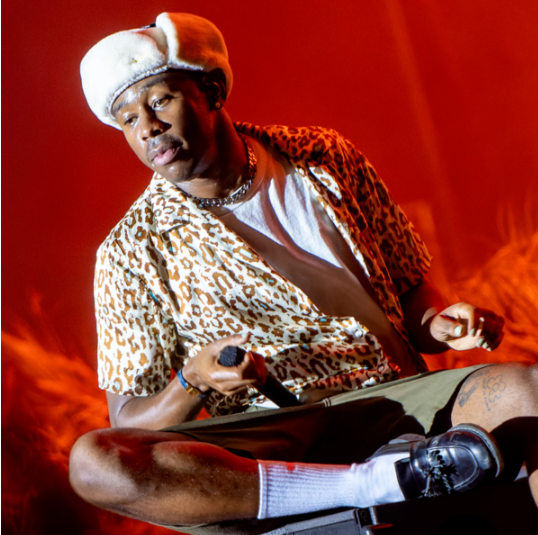
Throughout music history, countless artists have adopted “alter egos.” Crafting a new identity enables artists to experiment with different genres and styles, dive deeper into their creativity and allow for greater self-expression.
For some artists, putting on a “new face” allows them to express themselves however they want and creates a bond between the artist and their audience. A modern example of this is Eminem, the best- selling rapper of all time, and his character “Slim Shady.” This darker, more aggressive persona helped skyrocket his earliest tracks and quickly became an outlet for Eminem to express his thoughts, as he explained in an interview with Genius.
“When I started rapping as Shady, as that character, it was a way for me to vent all my frustrations and just blame it on him,” Eminem said. “If anybody got mad about it, it was him that said it. It was a way for me to be myself and say what I felt. I never wanted to go back to just rapping regular again.”
Eminem wasn’t the first to introduce alter egos to the music industry. One of the original mainstream users of an alter ego was David Bowie,most famously known as Ziggy Stardust. This character that Bowie created was a bisexual alien with a tendency to cross dress; though not received well by everyone in the 70s, it launched Bowie to instant stardom. Suddenly, it was cool to be extraordinarily different. David Bowie couldn’t wear heels, outlandish clothes, and heavy makeup, but Ziggy Stardust could.
Junior Nicole Sandvik of Manalapan spoke on the lasting effects Stardust had on the music industry.
“I think it helped push boundaries. It brought something that people hadn’t seen before,” Sandvik said. “It was unconventional; you had the makeup and the massive show presence and you had all these elements combined that made it something no one had ever seen before.”
On the flip side, Bowie’s use of thealter ego is additionally a perfect example of when a persona becomes harmful. Only two years after the creation of Stardust, the character was dead. It wasn’t because Stardust wasn’t selling as well as before, but because the lines between himself and Stardust were beginning to blur, with fans beginning to solely recognize Bowie as Ziggy Stardust. Bowie spoke on his reasoning for retiring Stardust and his other egos in his later years.
“I couldn’t decide whether I was writing the characters, or whether the characters were writing me, or whether we were all one and the same,” Bowie said.
Tyler, the Creator is a prime example of modern-day usage of alter egos. Tyler is known for using different alter egos to explore himself whenever he releases a new album, including titles like Dr. TC., Ace, and Sam. One of these alter egos, IGOR, was used to express ideas of heartbreak through a loud and aggressive persona – something Tyler could not have done on his own.
However, some fans don’t agree with an artist’s usage of an alter ego to explore unconventional ideas. Sophomore Cate Stanziola of Tinton Falls spoke on why she believes that using alter egos has become uncreative and a cover-up for out of line beliefs.
“I think it can be seen as an excuse to write about things that can be perceived as inappropriate or sometimes a little off beat and weird,” Stanziola said. “I think Tyler, the Creator uses it as an excuse to cover up older songs so that he doesn’t have to face criticism for it or have to remove his name from the album and take it down.”
While alter egos are controversial, their impact on the music industry is undeniable as they continue to shape and reinvent artistic expression.








